Amsterdam has more canals than Venice, yet most visitors only glimpse a fraction of these liquid highways that shaped an empire. With 165 canals connected by over 1,700 bridges, the city’s waterways tell stories of merchants, artists, and rebels who built one of history’s greatest trading capitals. Here’s a curated journey through the canals that define Amsterdam’s soul, from the grand merchant palaces to hidden Jordaan gems where painters once captured light dancing on water.
Singel
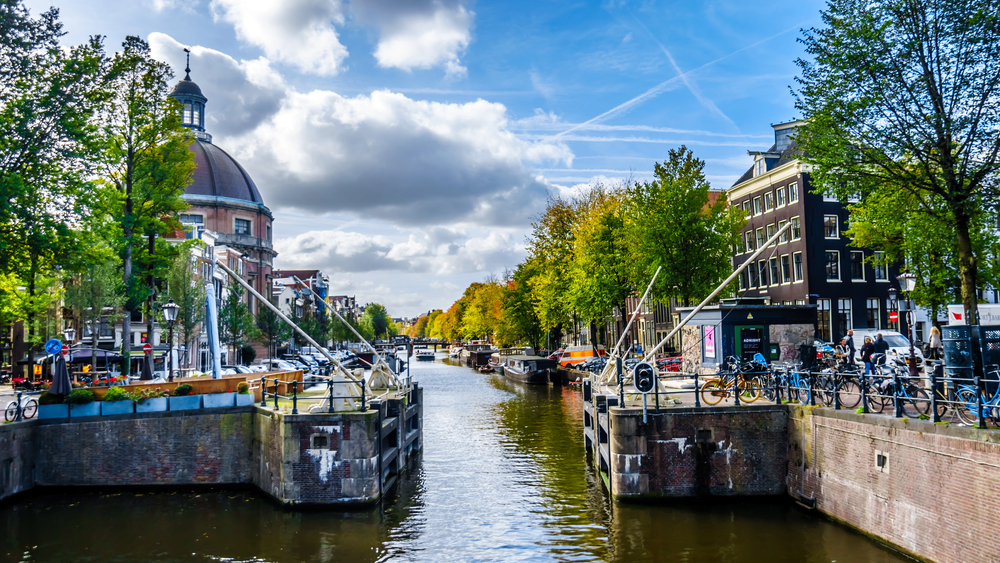
— Photo by harrybeugelink@gmail.com
The Singel holds the distinction of being Amsterdam’s oldest canal, originally dug in the medieval period as a moat to defend the walled city. This curved waterway now marks where medieval Amsterdam ended and the Golden Age expansion began.
Visitors to the Singel will discover the world-famous floating flower market (Bloemenmarkt), the only one of its kind, where colorful flowers and Dutch bulbs have been sold from floating barges since 1862. The scent of fresh tulips mingles with canal water. The canal is also home to Amsterdam’s narrowest house, measuring just over two meters wide.
Herengracht
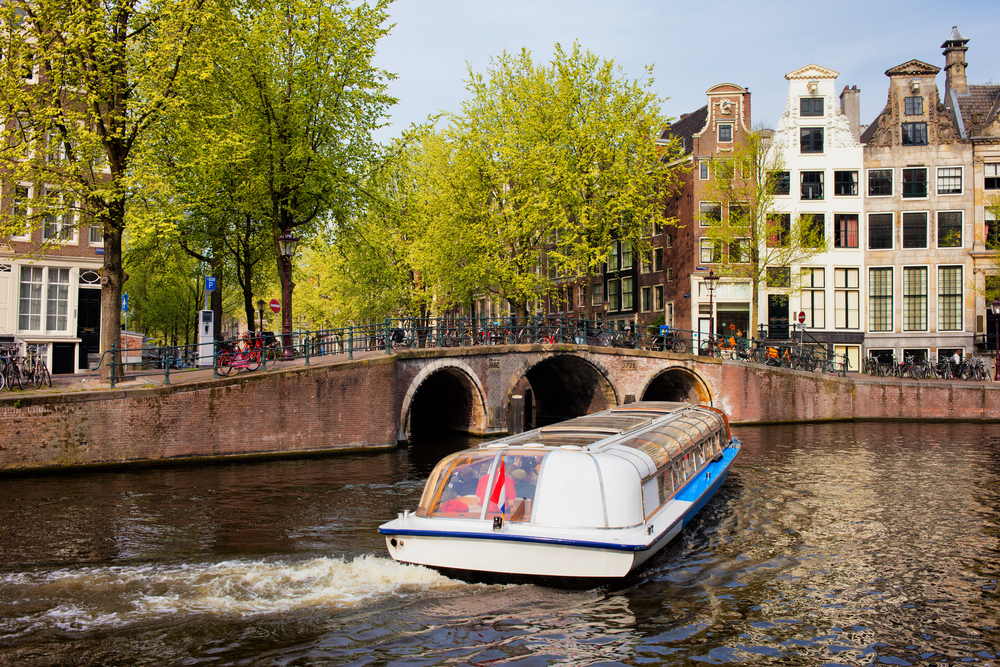
Herengracht (Patricians’ Canal or Lords’ Canal) is the first of the three major canals in the city centre of Amsterdam. The canal is named after the heren regeerders who governed the city in the 16th and 17th centuries. Money built this canal. Serious money.
The row houses that line this so-called “Gentlemen’s Canal” were owned by wealthy merchants in the 17th and 18th centuries, when the country was thriving due to the rich Dutch East India Company. The Golden Bend section remains Amsterdam’s most expensive real estate. Samuel Sarphati (1813–1868) lived at the house at number 598, and Peter the Great stayed at the house at number 527 during his second visit to Amsterdam.
Keizersgracht
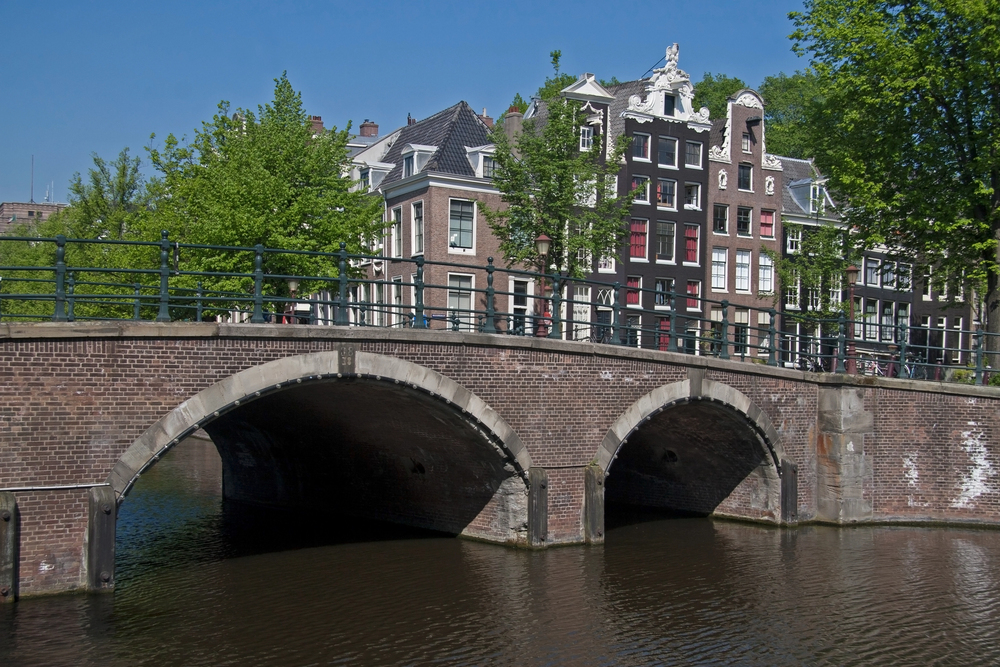
— Photo by RonaldWilfred
The Emperor’s canal is the middle one of the three main canals of the city. It was named after emperor Maximillian of Austria. The canal is 31 metres wide, which makes it the widest canal in the city center.
This regal waterway flows past some of Amsterdam’s finest museums and gardens. John Adams stayed at the house at number 529, Heinrich Schliemann worked for almost three years at number 71, Daniel Fahrenheit at 463–465, and during his first visit to Amsterdam (1693), Peter the Great stayed at the house at number 317. History lives in every doorway.
Prinsengracht
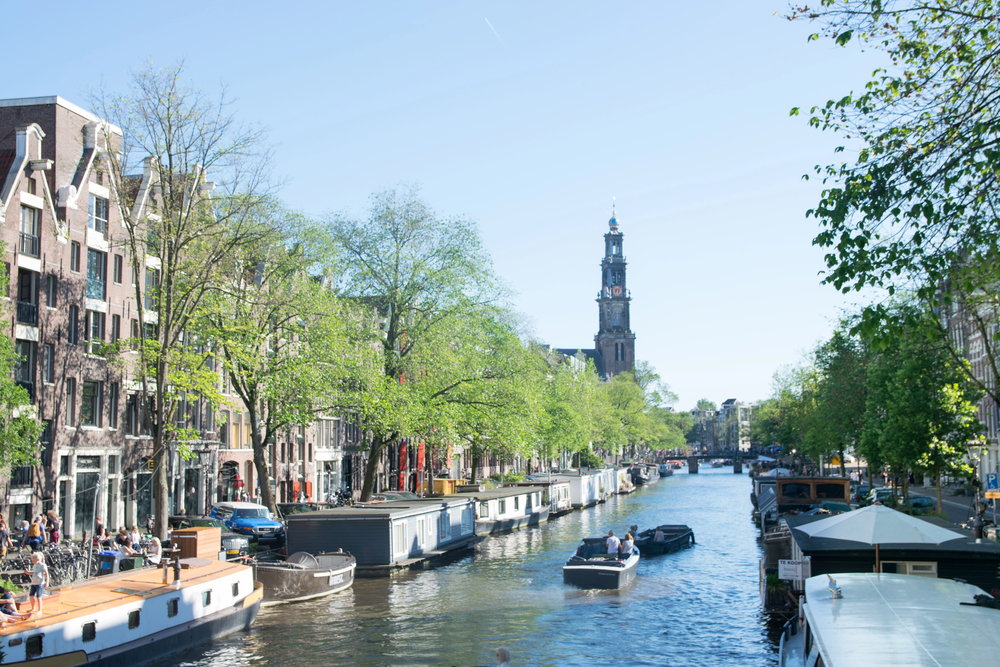
— Photo by jopstock
With its impressive length of more than three kilometers, this famous canal cuts right through the city center, starting in the northwest at Brouwersgracht and ending in the Amstel river. But length isn’t everything.
Notable buildings along Prinsengracht include the Noorderkerk (Northern Church), the Noordermarkt (Northern Market), Anne Frank House, and the Westerkerk (Western Church, Amsterdam’s tallest church). During annual celebrations like King’s Day (April 27) and Canal Pride (August), Prinsengracht transforms into the epicenter of citywide festivities. The water becomes a floating party. And who doesn’t love a good floating party?
Brouwersgracht
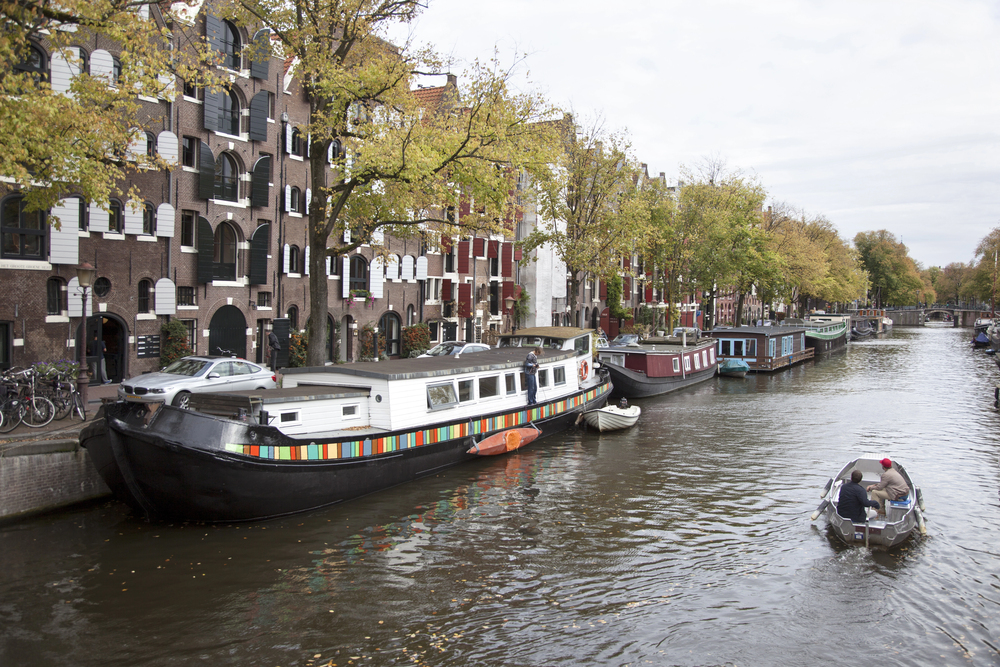
— Photo by ahavelaar
Many Amsterdam locals will agree that the Brouwersgracht is the most beautiful canal of Amsterdam. In 2007, when local newspaper ‘Het Parool’ asked its readers to vote for the most beautiful street of Amsterdam, Brouwersgracht actually ended top of the list.
Once lined with breweries, today it connects Amsterdam’s four main canals like a grand junction. They include all time local favourites such as café Thijssen (on the corner of Brouwersgracht and Lindengracht) and café Papeneiland (since 1642, on the corner of Brouwersgracht and Prinsengracht). These cafés have witnessed centuries of canal life unfold.
Reguliersgracht
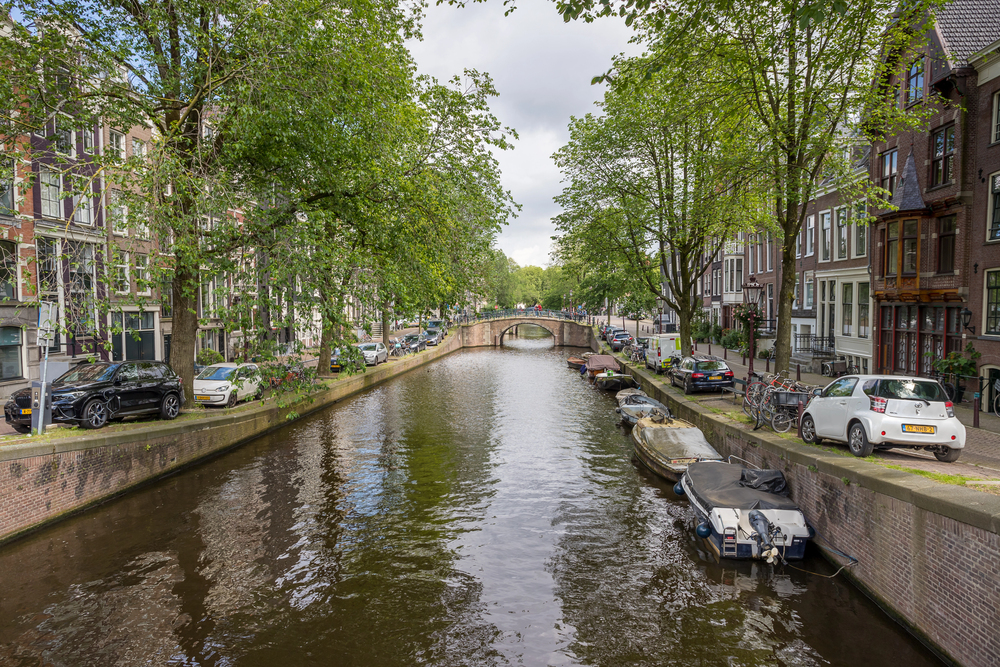
— Photo by wellsie82
This narrow canal earned fame for one spectacular view. Stand on the Herengracht bridge and look toward Reguliersgracht. Standing on the bridge on the corner of Reguliersgracht and Herengracht gives you a spectacular view — from the odd-numbered side you can see as many as 15 bridges.
Photographers call it the “Seven Bridges” shot, though counting varies depending on your perspective. The perfect Amsterdam postcard moment awaits here.
Zwanenburgwal
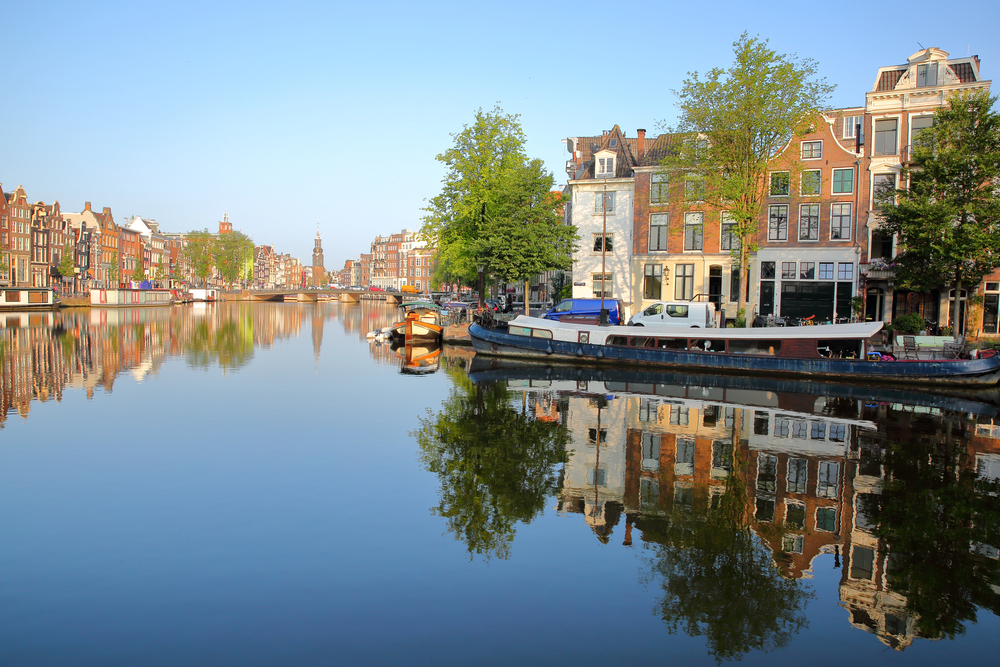
Zwanenburgwal is a canal and street in the center of Amsterdam. The painter Rembrandt and philosopher Spinoza lived here. Art and philosophy flowed through these waters like creative currents.
In 2006, it was voted one of the most beautiful streets in Amsterdam by readers of Het Parool, a local daily newspaper. The neighborhood surrounding this canal has deep connections to Amsterdam’s Jewish heritage, as it bordered the former Jewish quarter before World War II.
Bloemgracht
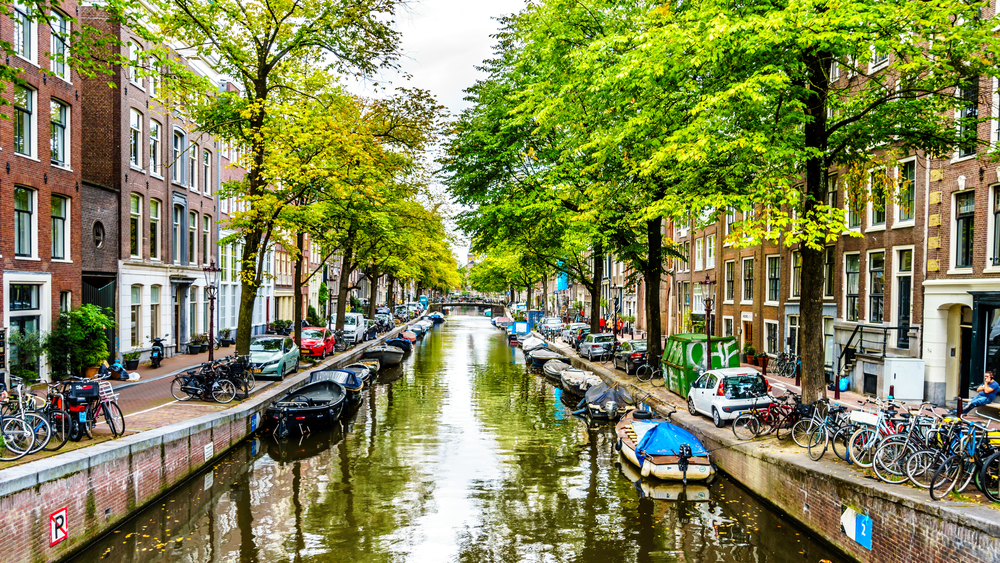
— Photo by harrybeugelink@gmail.com
BLOEMgracht (FLOWER canal) is one of so many canals in Amsterdam. But don’t confuse it with the flower market — that’s elsewhere. There’s not really a special canal except the houses on Bloemgracht 87-91, “De Drie Hendricken”, Triple Stepped Gable houses with three different gable stones form 1642.
Bloemgracht is a smaller canal which runs between Prinsengracht to Lijnbaansgracht in the Jordaan district. Tree-lined and peaceful, it embodies the Jordaan’s village-like charm. The smell of bread from local bakeries drifts across the water on quiet mornings.
Egelantiersgracht
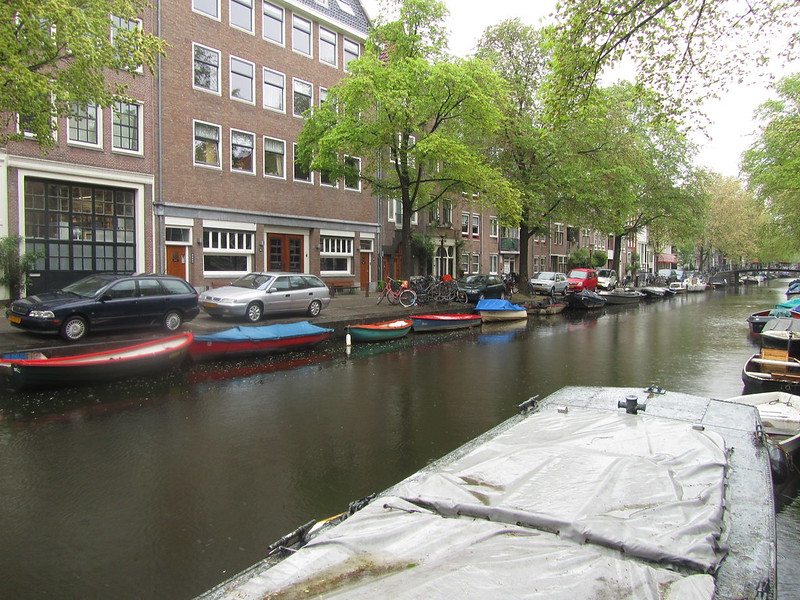
This canal is named for an eglantine rose (Rosa rubiginosa). Poetry in city planning. The St. Andrieshofje at Egelantiersgracht 107-114 was built in 1617. The passageway to its courtyard is splendidly decorated in blue and white tiles.
The pedagogue John Amos Comenius ( 1592–1670), lived in Egelantiersgracht 62. This Jordaan canal hosted scholars and craftsmen who shaped Amsterdam’s intellectual life. Still does.
Spiegelgracht

The Spiegelgracht (Dutch: [ˈspi.ɣəlɣrɑxt], mirror canal) is a canal in the center of Amsterdam, located near the Prinsengracht. Built in the 16th century, it is a part of the Canals of Amsterdam, which have been designated as UNESCO World Heritage Sites.
Short but memorable, Spiegelgracht runs through Amsterdam’s antique district. Gallery owners and art dealers line its banks, continuing a tradition of commerce that’s lasted centuries. Perfect for browsing after a canal walk.
Leidsegracht
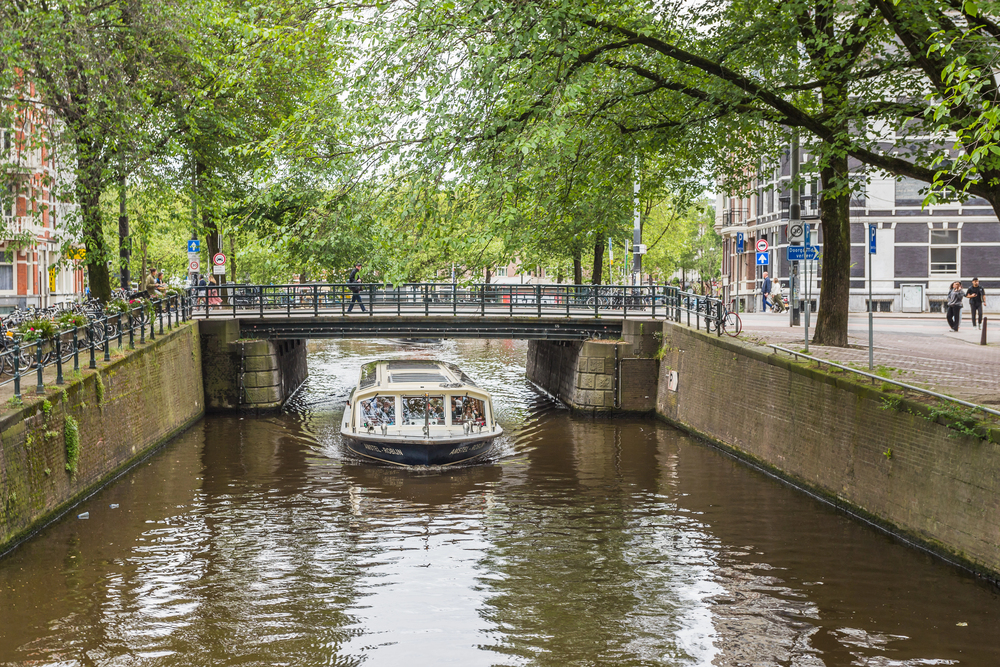
— Photo by wellsie82
The Leidsegracht (Dutch pronunciation: [ˈlɛitsəˌɣrɑxt]) is a canal in Amsterdam, Netherlands. It is a cross-canal in Amsterdam-Center that connects Herengracht, Keizersgracht, Prinsengracht and Lijnbaansgracht and flows into the Singelgracht at Marnixstraat.
Think of it as Amsterdam’s great connector. Between 1615 and 1658, the Leidsegracht was the southern boundary of the city. Cornelis Lely (1854–1929), the hydraulic engineer, governor, and minister who made the original plans for the reclamation of the Zuiderzee, was born on Leidsegracht no. 39. Engineering genius started here.
Groenburgwal
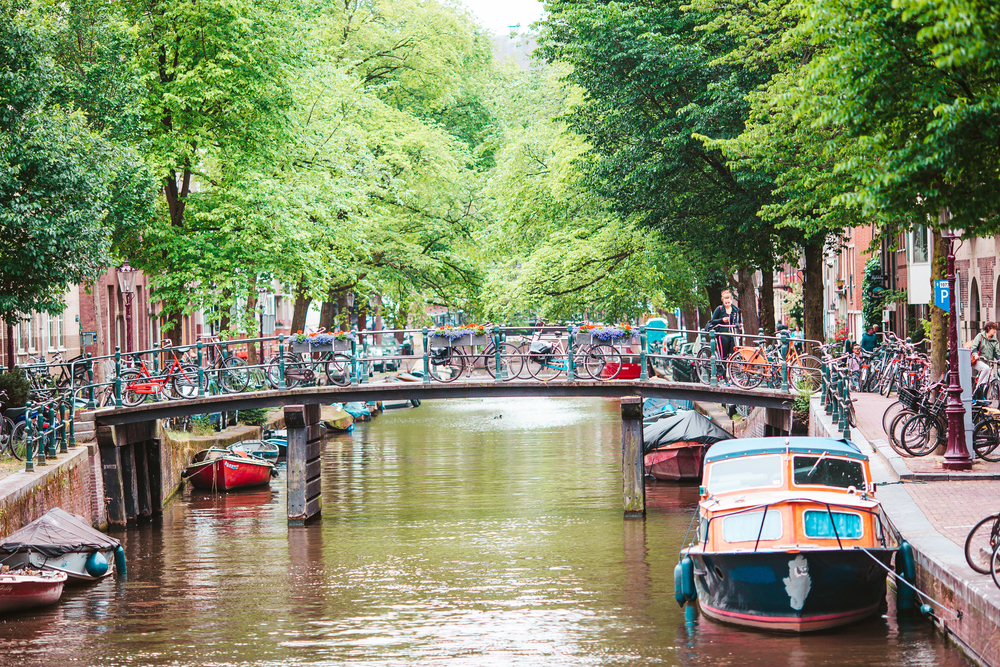
The Groenburgwal (Dutch pronunciation: [ˈɣrumˌbʏr(ə)xʋɑl]) is a canal in Amsterdam that connects the Raamgracht with the Amstel. c. 1874, the impressionist Claude Monet painted the canvas The Zuiderkerk, Amsterdam (Looking up the Groenburgwal). The painting is owned by the Philadelphia Museum of Art.
Small but spectacularly photogenic, Groenburgwal offers what many consider one of Amsterdam’s most iconic views: the slender tower of the Zuiderkerk (South Church) perfectly framed at the canal’s end. If it’s good enough for Monet, it’s good enough for your Instagram.
Kloveniersburgwal
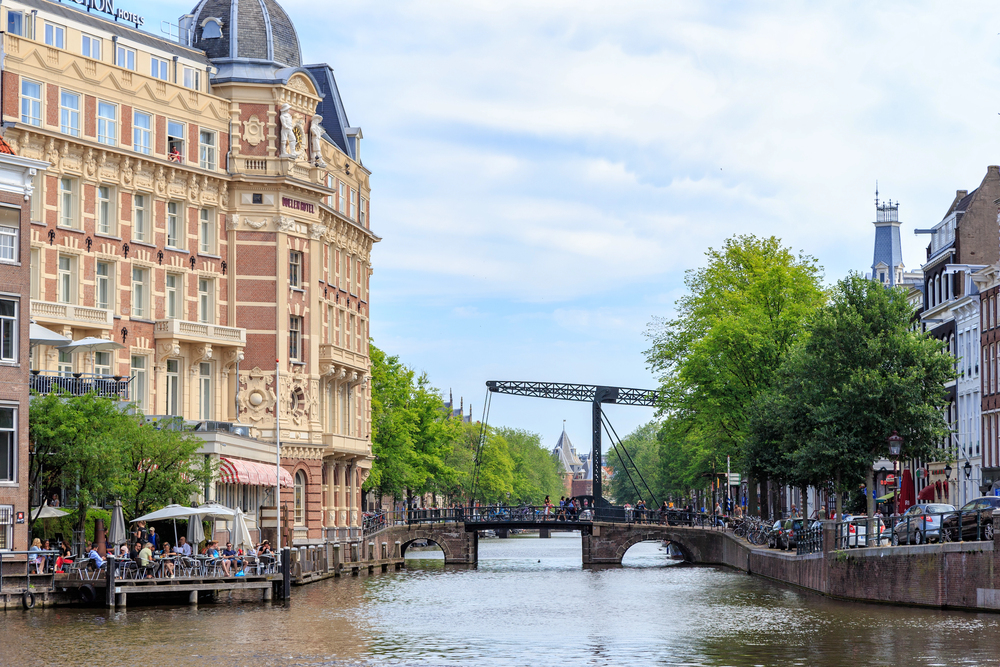
— Photo by MaykovNikita
The name ‘Kloveniersburgwal’ comes from a division of the civic guards, the ‘kloveniers’, named after the gun the guards were armed with. Military history flows through these waters.
Their former headquarters, the Kloveniersdoelen, once stood along this canal—a building where Rembrandt’s famous “Night Watch” was first displayed in 1642. Today, stately canal houses line this historic waterway, including the notable Trippenhuis with its unusually broad façade, now home to the Royal Netherlands Academy of Arts and Sciences.
Oudeschans
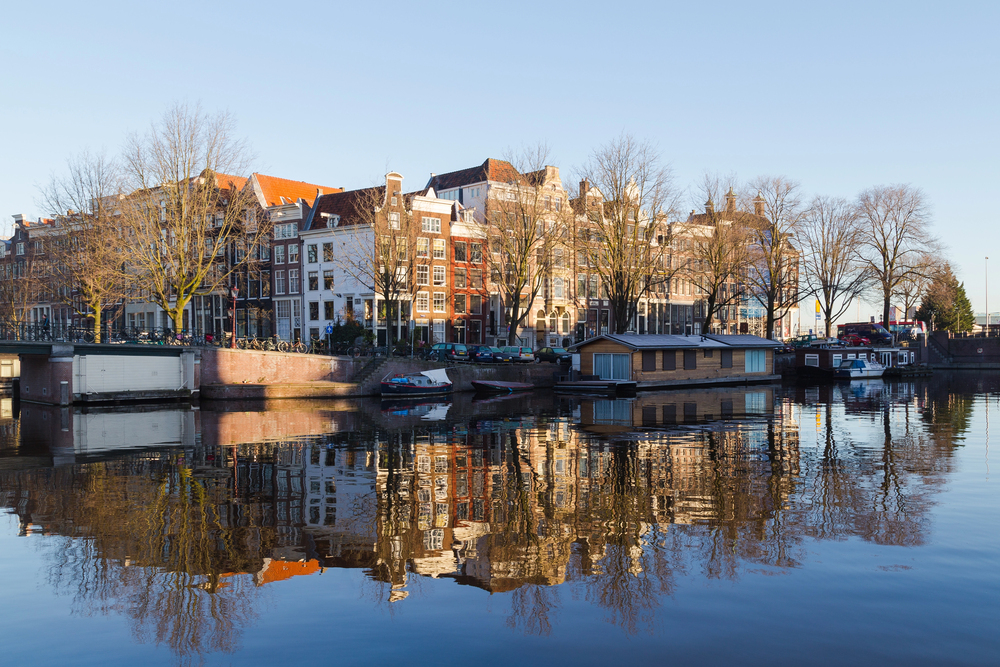
The Oudeschans, or Oude Schans (Old Rampart), originally the Nieuwe Gracht, is a wide canal in the eastern part of the inner city of Amsterdam. Defense turned into beauty. The 16th-century Montelbaanstoren is on the canal, which is sometimes called the Montelbaansgracht.
Along its eastern bank stands the distinctive Montelbaanstoren, a guard tower built in 1512 and later crowned with a clock spire in 1606 that earned the nickname “Malle Jaap” (“Silly Jack”) for its once unreliable bells. Time may be unreliable, but the tower’s charm endures.
Lauriergracht

The Lauriergracht (Dutch pronunciation: [lʌuˈriːrˌɣrɑxt]; literally “Laurel Canal”) is one of the canals of Amsterdam, located in the Jordaan, west of the Grachtengordel. Artists found their muse here.
It was painted and photographed by George Hendrik Breitner, who set up a studio on the canal, at number 8, in 1893 and stayed there until 1898. At the end of the 17th century, the Lauriergracht had been the residence of several artists and their relatives. Creativity clusters along certain canals like morning mist.
Lijnbaansgracht
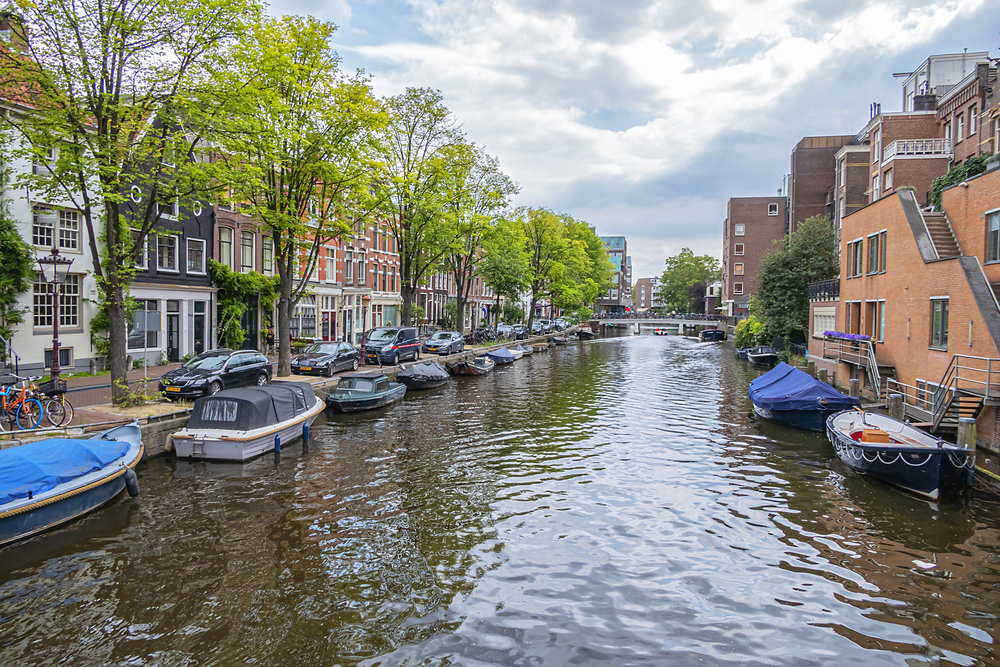
— Photo by dbrnjhrj
The Lijnbaansgracht is named after the ropewalks (“lijnbanen”) of the ropemakers, which needed a lot of space and were located here on the former edge of the city. Industry met art along these banks.
On the Lijnbaansgracht 234-A (at the Leidseplein, behind the Stadsschouwburg) is Melkweg, a multimedia center for pop music, dance, theater, film and visual arts, and also a tea house, restaurant and gallery. From rope to rock concerts. Amsterdam evolves, but never forgets.
Water stories never end
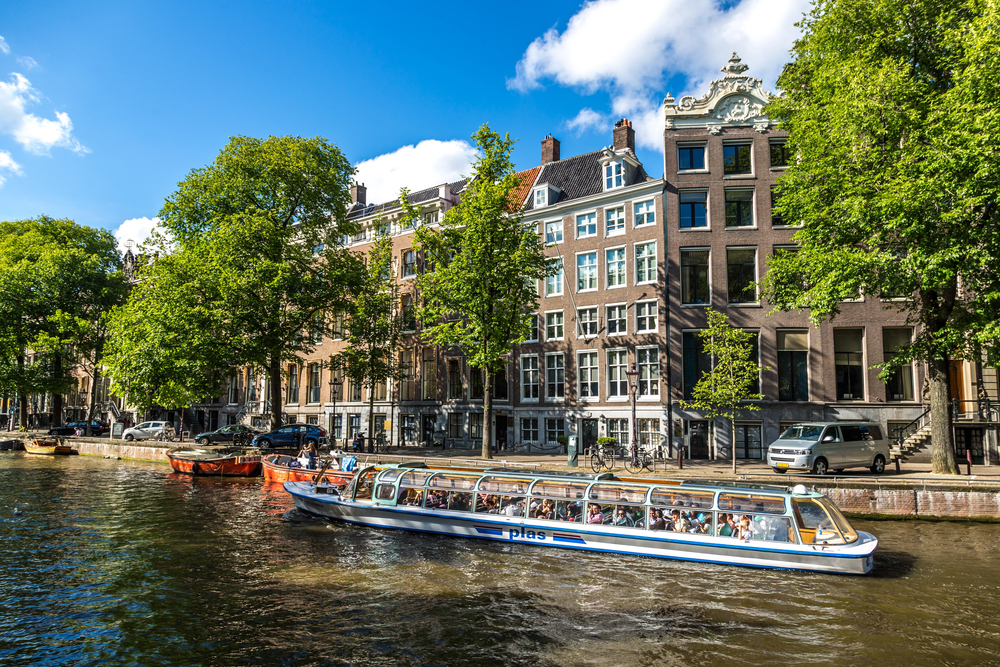
— Photo by lspencer
Ask tourists what they like best about Amsterdam, and the city’s canals are bound to be high on the list. These waterways built an empire, housed rebels, inspired painters, and still pulse with daily life. Each canal holds different chapters of the same story: how a marshy trading post became the world’s most beautiful floating city.
More from Travel Pug

- 20 Best Beach Towns in the Carolinas
- 13 Destinations Where Tourists Regularly Regret Their Trip
- 20 Things You Actually Get in First Class
- 20 Small Airports With Aviation Museums
- 20 Places in the U.S. That Are Perfect for a Reset Trip
Like Travel Pug’s content? Follow us on MSN.
